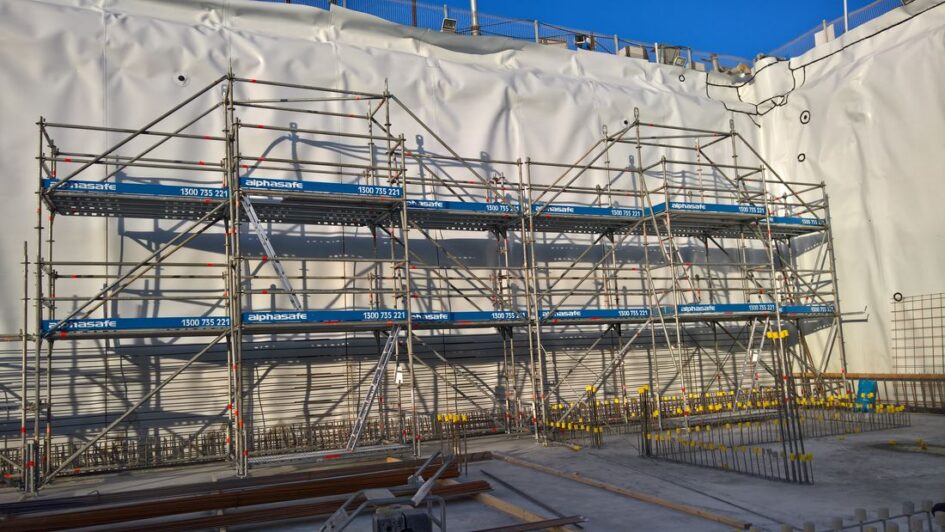Scaffolding is a temporary structure that is suitable for use during construction. The facility is used to elevate the standing ground, offer support, and provide relevant materials for the project. The construction business may not even be a new structure, but the repair and cleaning process of the work project. Therefore, scaffolding structures are often installed before the construction process or before the maintenance work.
However, the need for scaffolding depends on the size of the project under ideal conditions. You can also ensure that the safety of the construction process by using the proper scaffolding. In addition, it also produces an optimum level of support to the right standing for all workers and holding materials while the construction is in progress. This article focuses on the most crucial reason why the construction industry cannot do without scaffolding. Visit https://www.bkhgroup.com.au/our-locations/scaffold-sydney/ to learn about using Scaffolding in Sydney.
Benefits of Scaffolding in Construction
1. Safety assurance
The number one purpose of scaffolding is to secure the workers on the site, especially if they need to reach a height. At construction sites, you need scaffolding to ensure the workplace for all workers at all times. In addition, the scaffold will add a flat surface that is balanced for the workers to stay and bring their needed tools. Multiple workers can also work side-by-side on the project, which can help speed the construction of different favorite structures.

Scaffolding also enhances the speed of the project execution by saving the time it would have taken to find and use alternatives. It is also easier to maintain a balance for the workers on the equipment and reduce the possibility of injury or fall. At the same time, pedestrians and the public may be the ones to use the scaffolding. The reason is that some scaffolding structures may also be a facility that will stand in the place before you install the permanent system.
At times scaffolding may also include handrails that support the climber when on a higher platform lowers the chance of falling. In modern cultures, scaffolding is not only used for builders or engineers; artisans and craftsmen, including painters and other technicians, may also use them.
2. Easy Access
When a scaffold is also in place, it is an extra assurance that all the parts of the construction site will be more accessible to the workers. For instance, in the construction of high rise buildings, it may prove more challenging to access the portions of the building without a problem. Otherwise, many parts of the building may pose a severe trial to workers and solve the problem. Meanwhile, it is easier to reach any part of the ceiling, wall or part of the building to a reachable point. Therefore, a small platform of wood to the desired height, lightweight metal or fiberglass. It also brings workers to the desired size to finish the task as hand at ease.
3. Position advantage
Another advantage of having scaffolding on-site is that you can bring the worker to different strategic positions that you want. On the one hand, a ladder can help to some extent, but it has its disadvantages. For instance, the ladder cannot provide the kind of balance that a scaffold would provide. Therefore, scaffolding is a better tool than a ladder when you need to reach any position on the building to do a particular work.
Many scaffolding companies understand the priority of their product and service in Sydney and hold it in high esteem. In addition, scaffolding can put a worker at the exact position of the wall, ceiling or roof. The leverage it provides allows multiple workers to carry out their tasks simultaneously, an advantage that ladders cannot give them.

Capacity of scaffolding
What are the capacity requirements of scaffolding for it to be optimally efficient? The following are the standard requirements that you should look out for in scaffolding.
- A scaffold should be designed by a professional that understands what scaffolding should have. Remember that a scaffold is equipment that can determine workers’ safety on different heights of the project. Therefore, one cannot afford to fabricate it shabbily. Instead, get a professional to produce the right kind of scaffold that you need. And in any case of rent, ensure what you have has all the qualities you need to meet your exact purpose.
- A scaffolding structure is also a piece of standard equipment on a construction site and must therefore align with the country and city’s approved design and standard protocol.
- Each item or component in the scaffold should provide reliable support with no chance of failure. Therefore, it should carry its weight and bear the weight that is at least four times the maximum intended load on it.
- A scaffold and scaffolding components must also not carry excess loads than the maximum or rated capacity.
- The construction-grade lumber should bear a minimum weight of 1500 lb-f/in2 when scaffolding structures are made of timber.
On the other hand, there are specific scaffold requirements, especially when it is made of planks or decks. At the same time, it is also possible that it allows enough space between the platforms and the uprights. However, this should be a maximum of 1 inch (2.5 cm). in the presence of side brackets, the odd-shaped branches or structures may also result in a wider opening with the platform or the uprights.
Conclusion
On a final note, scaffolding is an indispensable part of construction work and is crucial to the industry. You can then easily access the structures and carry out your duty alongside another worker simultaneously. In addition, workers exercise more liberty, comfort, convenience and freedom. In other words, having scaffolding on-site in Sydney can speed up the task at hand, save cost and allows more efficiency at work. You can contact BKH Group for scaffolding services for your building projects in Sydney.
